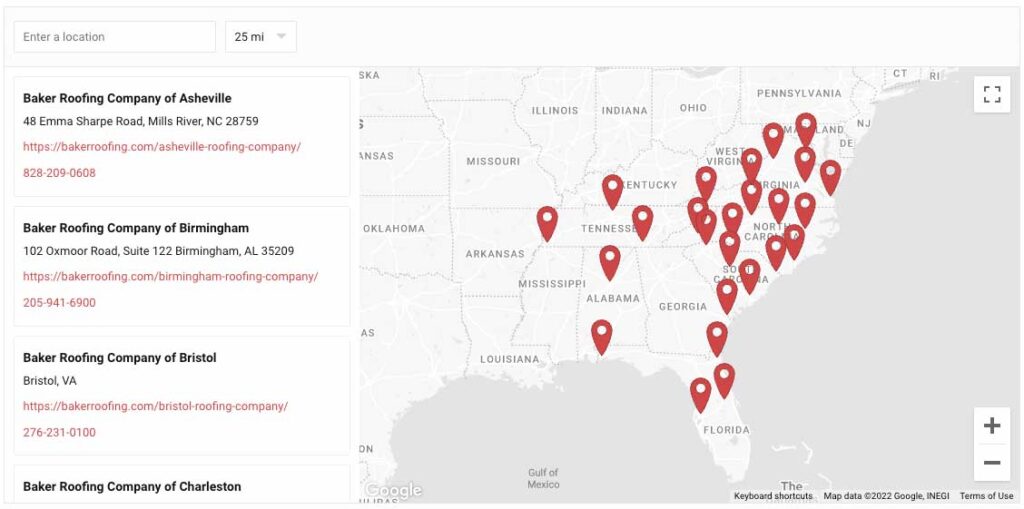The Truth About Storm Remediation Work and Insurance-Related Claims
Being a native North Carolinian I know as well as anyone, “The Old North State” has some wild weather that can divvy out some extreme wind and hail at times. Such can result in real damage to our roofs and other exterior surfaces of our homes.
Having worked in (installing shingles every day personally for over 34 years) the home remodeling industry in NC for over 42 years, I am often asked by friends, neighbors, and acquaintances, “Keith, what’s is going on with all these annoying roofing contractors that knock on my door every time we have a storm come through?” Such seems to have become a “norm” in our area in recent years- so as a seasoned leader in the industry, and because I’m a homeowner too, I feel obliged to offer some thoughts and concerns surrounding the topic of insurance roof replacement, related to storm damage.
Insurance work is something that, in recent years, some contractors have sought to exploit for their own gain. Like any trade, most contractors are honest and reputable, but there are some “unscrupulous” contractors out there- some that even look really reputable. These contractors misrepresent, exaggerate, or even in some cases, create damage to your roof while “inspecting”.
They guarantee to get an insurance claim prior to the approval from the insurance company- how do you know as the homeowner, that all costs will be approved? Many times, “sudden, unforeseen costs” come up during the roof replacement, which your insurance company may deny, and you- as the homeowner, are now left on the hook.
The scenario goes something like this:
Someone shows up at your door promising that they can likely “help” you get a new roof that will be paid for by your homeowner’s insurance policy. They will even sometimes claim they are responding to a storm that occurred years in the past- I say that because you may be thinking “We haven’t had a strong storm that I recall in some time now”- right? They inform you all you need to do is give them permission to get on your roof and inspect. They even offer to contact the insurance company for you and if you just sign their contract, they will happily do the job for whatever the insurance company is willing to pay and offer to “waive” your deductible. Some even insist on partial or full payment upfront- BEWARE! Also- never give a “contractor” cash up front- there’s a good chance you will never see them again.
It sounds like a great deal- you get a new roof for “free”, but there are a few things that should be considered and understood. First, the contract you are provided to sign is typically exclusive to that contractor- so then, you are contractually obligated to this contractor under a fine print agreement to pay them “x” dollars if decide not to use them. In addition, large claims such as roof replacements result in an increase in the policy premium, so that “free” roof really isn’t free at all in the long run.
Then there is the deductible- what you must pay out of pocket. This is a big one and I’m going to take a minute here to explain some things you need to consider folks.
In the simplest terms, insurance roof claims are typically satisfied as follows: the insurance company adjustor evaluates and determines the costs of the repair, and then subtracts the deductible and depreciation of the roof. When the work is completed, an invoice is sent to the insurance company so that the contractor can then be paid.
For example, let’s say the homeowner’s deductible is $1,500 and the contractor says he will “waive” the $1,500 of your insurance deductible. If the contractor were doing the job as a simple retail job without insurance involvement, he would normally charge $10,000, which the homeowner would pay to execute the work. However, in the case of an insurance job, where the deductible is to be “waived” by a contractor, the contractor must inflate the contract amount to cover the deductible amount. So then, the job contract submitted to the insurance company needs to be $11,500 so that the insurance company will pay out a total of $11,500.
This allows for the homeowner’s deductible to be paid by the insurance company ($1,500), while also allowing the contractor to be paid his full contract of $10,000. So, it is considered a “win/win” for both the customer and the contractor…the problem is- it is insurance fraud because the insurance company is being billed more than the actual retail amount. The insurance company should have paid $10,000, less the homeowner’s $1,500 deductible (not factoring depreciation for simplicity here), which equals the legal yielded payout of $8,500. The homeowner is expected to, and agrees within the policy verbiage, to pay the $1,500 deductible. to make the contractor whole ($10,000). The $1,500 difference is the fraudulent dollar amount in the transaction. Some contractors may offer you a rebate, as a creative, “work-around” that equals your deductible.
https://www.nicb.org/news/blog/roofing-fraud-requires-vigilance
If a contractor is willing to commit insurance fraud, how well can you trust them with the workmanship, the recommendation for the best materials, and the methodology for your specific roof? (the “devil is in the details” when it comes to roof methodology- at least if you want a “bullet-proof”, long-lasting solution). Will they even be in town to honor their commitment and warranty if there is a future issue with the roof?
What happens if your policy is canceled due to fraud, making it more difficult to get homeowners insurance? If you are still paying a mortgage, how does that affect you?
Can you trust them to be honest about whether you really need a new roof to begin with and how do you know that you really have storm damage (typically resulting from hail/wind)? That person interrupting dinner and knocking at your door with a weather map, a pen, and paper to sign, pressuring you to be bound to them contractually sure seems like they are only interested in their own gain to me. If a contractor is that “needy”, are they really thinking about your best interests?
Don’t get me wrong, you may actually have damage and need a new roof, but should you not have the opportunity to call on a reputable contractor, with a historical record of excellence and expertise after a storm, and to do so on your terms, under your invitation??
So, if someone is knocking at your door to offer a free roof, demanding you sign something because you must act with haste, may I first suggest that you take a deep breath and do not feel pressured? You have time to make an informed decision. Even golf-ball-sized hail does not typically result in sudden, widespread roof leaks throughout your home. Know that you have the freedom to operate on your time and terms to have the roof inspected by a qualified, professional contractor who has a history of great performance.
I would also suggest that you only entertain consultation from a HAAG-certified contractor/inspector. https://haageducation.com/s/about-HCI
HAAG Engineering is a well-respected firm that specializes in many engineering services, including roofing. It is critical that the person who actually gets on your roof has been specifically certified and trained, possessing the skills and knowledge to properly assess, test for, and recognize REAL hail and wind damage. HAAG offers certification for residential roof inspections that include extensive training for all major roof types. Demand to see their credentials- after all, it’s your home.
In my opinion, most contractors who are willing to invest the time and effort to possess the HAAG credential are more likely to be ethical and trustworthy. Remember- just because you are being told your roof has storm damage does not mean it does.
Let’s talk about hail damage for a second. There are some very specific aspects of hail damage that are really just simple physics. You’ve got this!
When thinking about hail, it is important to understand that hail can damage a roof based on the “angle of attack”, so to speak and many times, hail is wind-driven. So the angle which hail happens to hit the individual roof planes can matter. “House A” may have significant hail damage, while “House B”, right beside it, may not be damaged because the hail simply glanced off that roof due to the angle of the roof related to the angle of the incoming hail. Of course, the size of the hail and the speed at which it impacts the roof planes has ramifications as well.
Think of it this way- if you throw a rock at a wall that is directly upright in front of you, it will cause far more damage than if you skip the same rock across the surface of the ground. So, hail size and deflection matter and have exacting consequences on the surfaces that it impacts. Just because hail shows up on the weather map, over your house and neighborhood, does not necessarily mean that you have a hail-damaged roof.
Finally, as to wind damage- Typically, wind damage will present as missing and/or creased shingles. This looks like black rectangles and lines in the shingle. Sometimes, shingles will lift or be torn during wind, but not completely come off the roof. Once a shingle has been lifted by the wind and the original seal broken, its wind resistance has been compromised. Wind damage that results in shingle “creasing” is not typically visible from the ground. This is where the shingle has been flipped back in the wind, and it returns to its original position but has been damaged, nonetheless. Beware of contractors who, while “inspecting” your roof may purposefully damage your roof to make it appear as though it sustained damage from a weather event.
When dealing with insurance claims and selecting a roofing contractor, it is recommended to work with reputable, licensed, and insured professionals who follow ethical practices. They should be transparent about the costs involved, provide detailed estimates, and assist you in navigating the insurance claims process within the boundaries of the law.
- Beware of contractors who offer to pay or rebate you for your insurance deductible.
- Never give a contractor cash up front.
- Make sure your contractor understands what your expectations are.
- Do not be pressured- Operate on your time and your terms.
- Identify and speak with a reputable, experienced contractor who has a history of great performance and ethics.
- Insist on having your roof inspected by a HAAG certified inspector.
Validate a contractor’s references, online reviews, licenses and other credentials.



